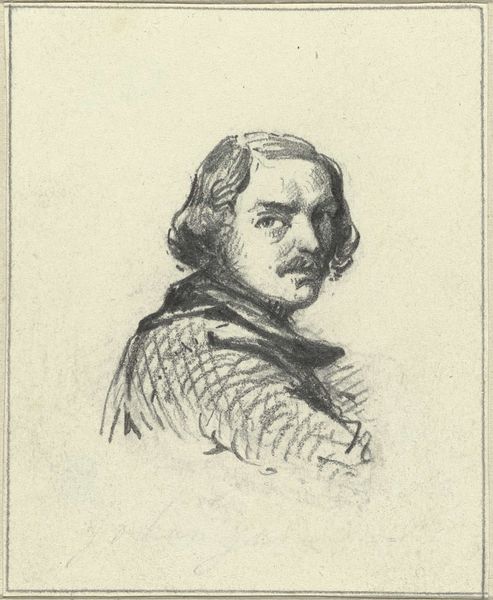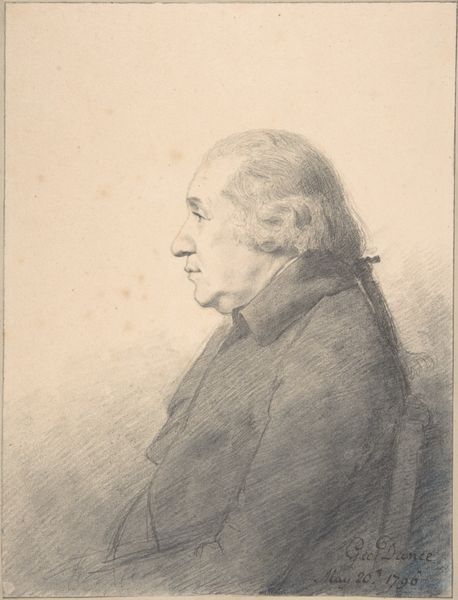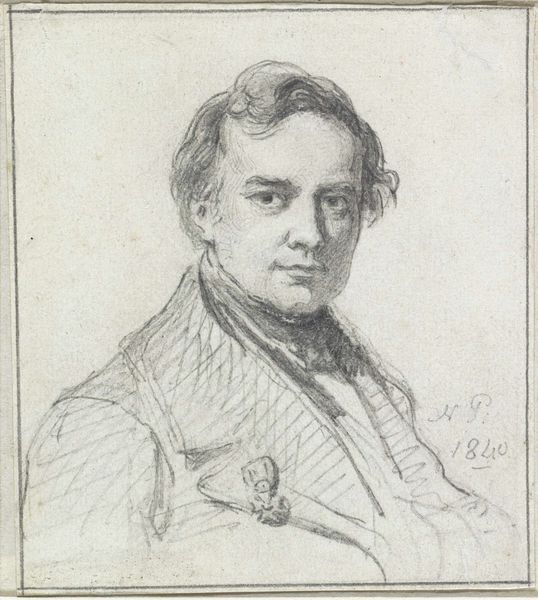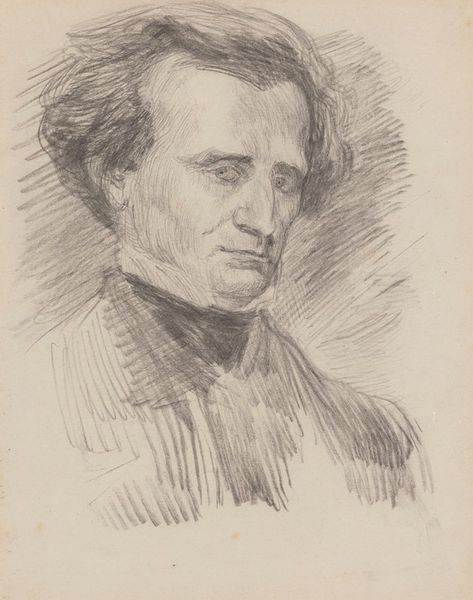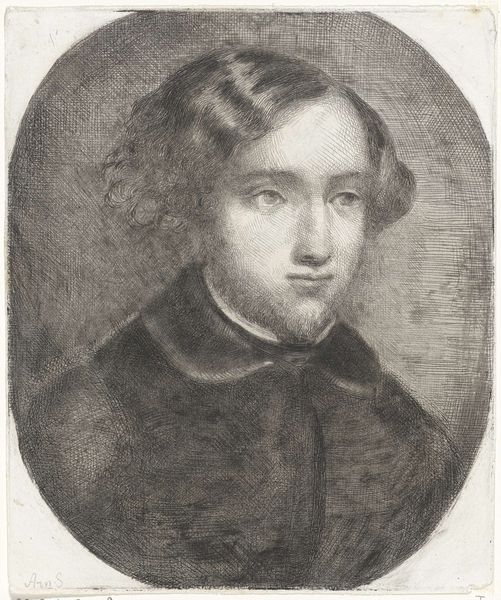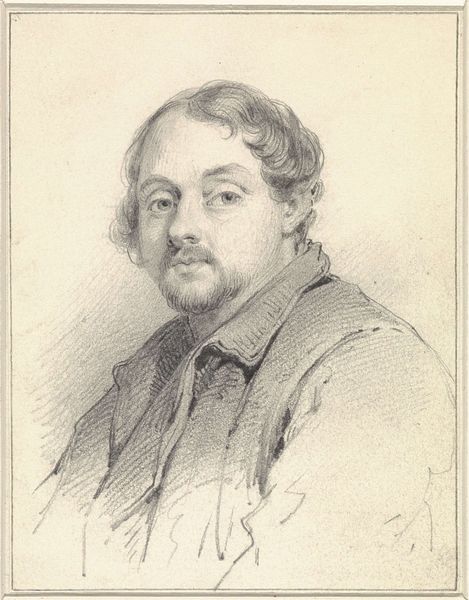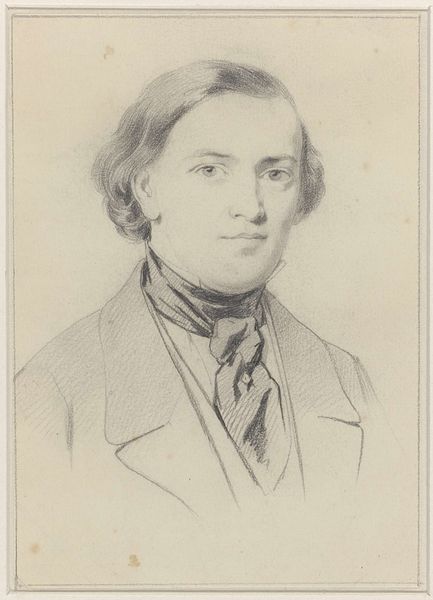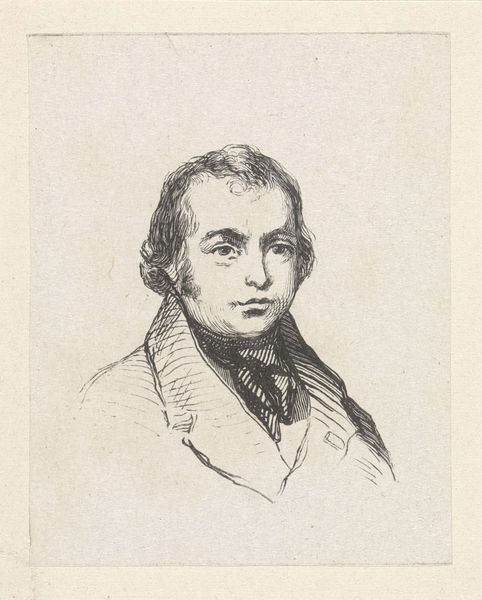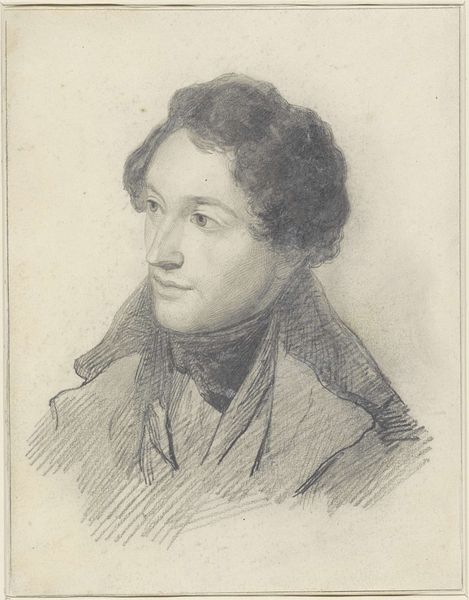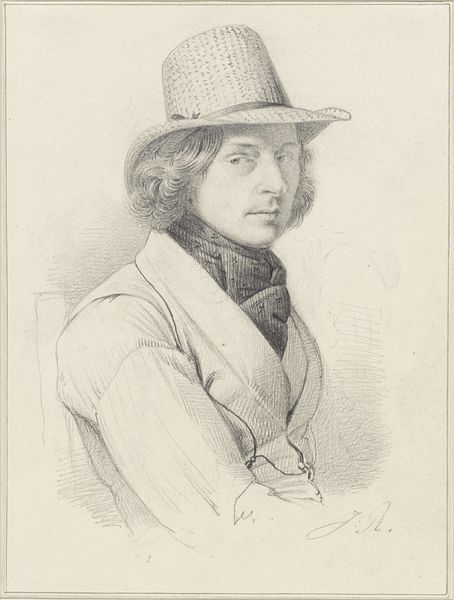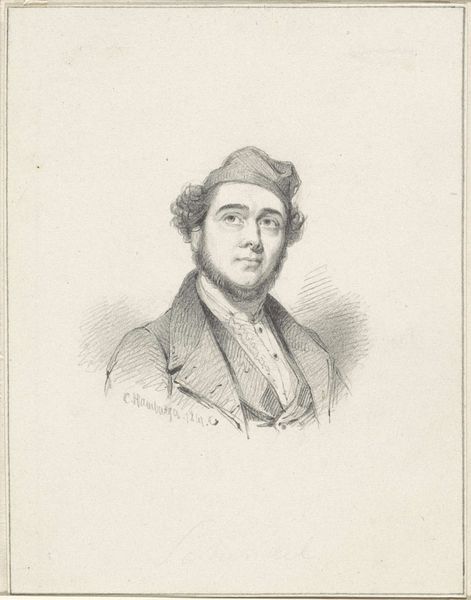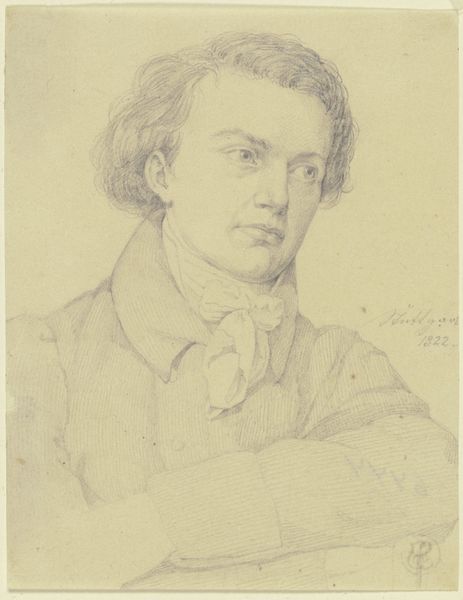
drawing, print, etching
#
portrait
#
pencil drawn
#
drawing
# print
#
etching
#
figuration
#
pencil drawing
#
line
#
portrait drawing
Copyright: National Gallery of Art: CC0 1.0
Editor: We’re looking at Theodore Roussel's "Dr. Bilderbeck Gomess," an etching print. The stark line work gives the piece a sense of immediacy, but it's also surprisingly soft. What do you see when you look at this work? Curator: My focus is drawn immediately to the economy of line. Notice how few strokes define the figure's form, yet they perfectly capture the planes of the face. Consider the etching lines themselves; their direction and density sculpt the subject. It's less about likeness, I propose, than about pure representation through form. Editor: So, you see the value in the composition, and the way it shows us a figure almost through shape. Curator: Precisely. The subject, “Dr. Bilderbeck Gomess,” matters little to me in terms of narrative or history. What truly captivates is Roussel's manipulation of the medium. How does the artist exploit the inherent qualities of the etched line to define space and volume? Observe how the direction of the strokes create light and shadow! It's almost an intellectual game on how to display form. Editor: That makes sense. So, it’s not so much about who Dr. Gomess was, but about how Roussel portrayed him, more about process and method. I get it now. Curator: Precisely. The focus shifts to Roussel's mark-making—his deliberate use of the etched line. It’s the medium becoming the message, wouldn’t you say? Editor: I think that looking at this etching as just lines gives the artwork a very clear feeling of expertise by Roussel! Curator: Absolutely. Roussel displays that talent as we get to expererience the mastery behind the form and structure.
Comments
No comments
Be the first to comment and join the conversation on the ultimate creative platform.
